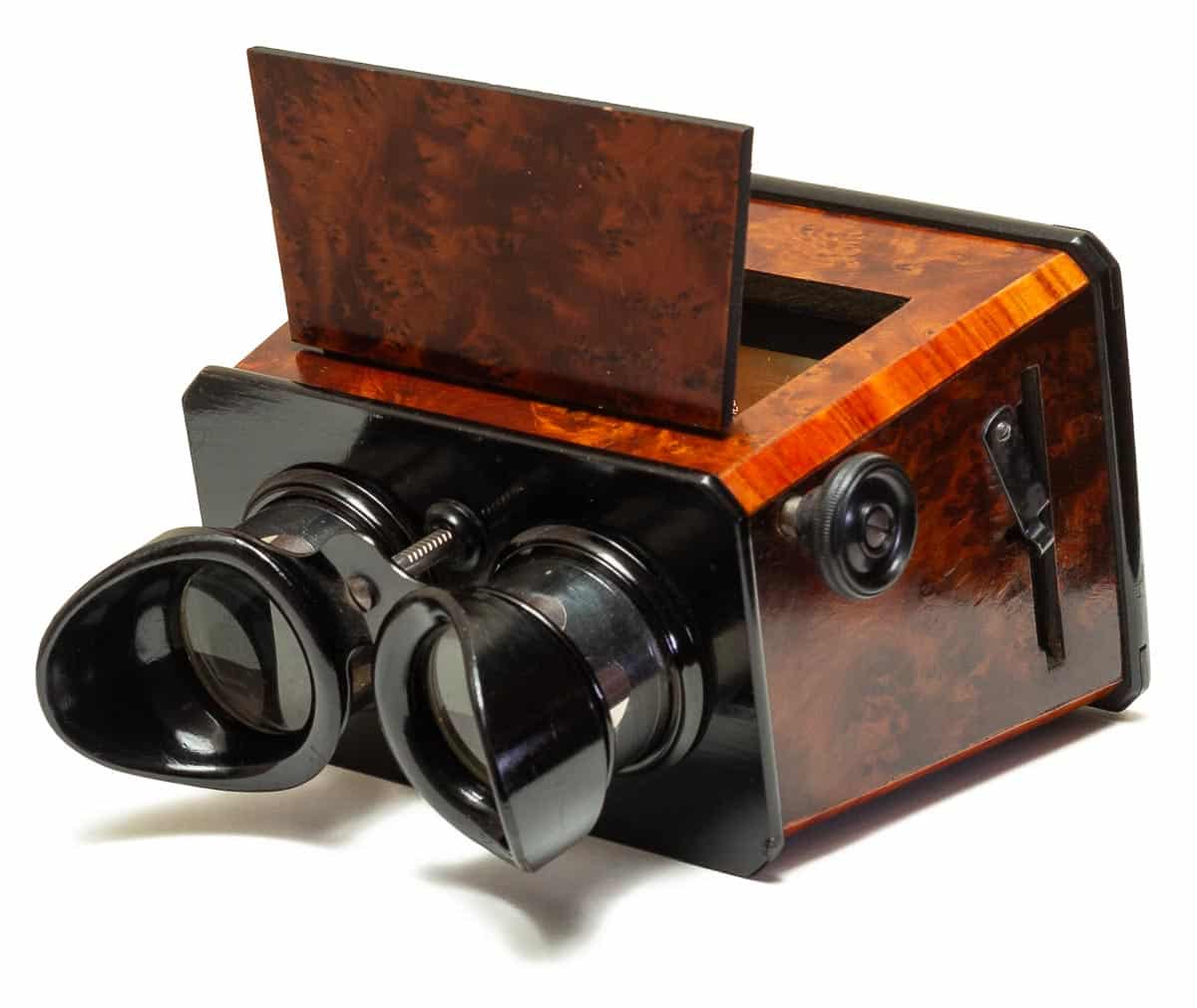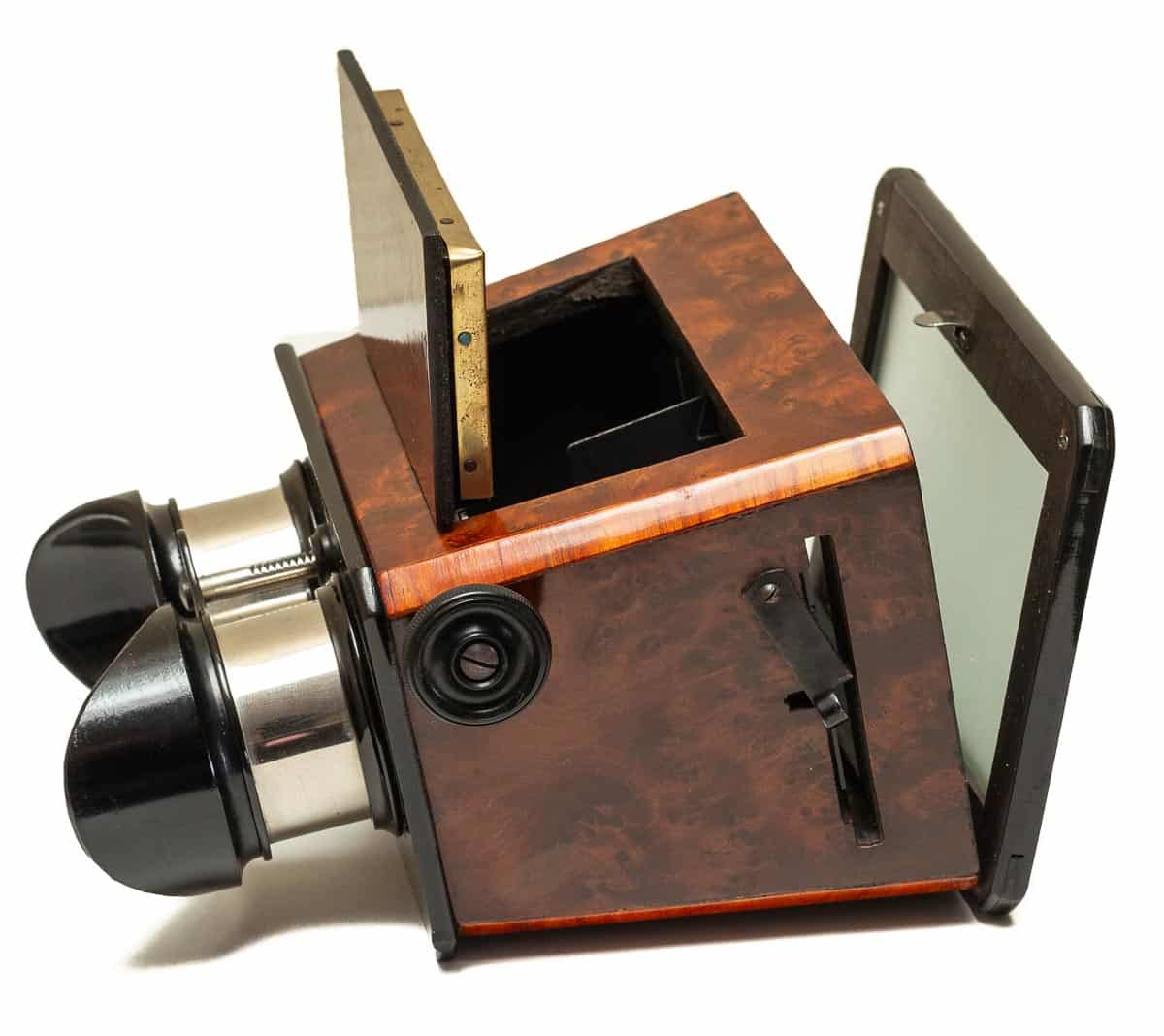
An attractive looking hand-held stereoscope with a burr veneer finish. The viewer is labeled Mackenstein, but just like the Stéréoscope à doucine, this viewer was manufactured by Mattey. The stereoscope was listed in Mattey’s 1922 catalogue in the category Stéréoscope format 6×131. The viewer could be purchased with normal lenses or achromatic lenses.
Mackenstein already sold stereoscopes from Mattey’s predecessor Maison Legendre, and the collaboration with Mattey continued until at least the early 1910s. From 1911, Mackenstein started designing and manufacturing his own stereoscopes.

Specifications
| Manufacturer: | Mattey |
| Year of introduction: | c. 1900 |
| Year of manufacture: | c. 1910 |
| Type: | Hand-held |
| Viewer: | Single-view |
| Serial number: | None |
| Stereoview support: | Glass and paper stereoviews |
| Stereoview format: | 6 x 13 cm |
| Lens focussing: | Yes |
| Inter-ocular adjustment: | No |
| Eyepiece blinders: | Yes |
| Dimensions (L x W x H): | 17 x 16 x 10.5 cm |
| Construction: | Wood |
| Other features: | Round metal plate on the front panel with Etabts Mackenstein, 7 Av. de l’Opèra, Paris. |
Glossary: achromatic lens / hand-held / inter-ocular adjustment / single-view
Hermann Mackenstein
Hermann Josef Hubert Mackenstein (1846–1924) was born in Doveren, Westphalia (present-day Germany). He learned the trade of carpentry and left for Paris in 1867 to improve his skills. He started manufacturing cameras at the end of the 1870s. His company moved to 15, Rue des Carmes around 1900, and a store was opened in 1902 at 7, Avenue de l’Opéra. Mackenstein’s company became a leading manufacturer of cameras in Paris. Mackenstein manufactured conventional cameras, stereo cameras and stereoscopes. In 1914, the international situation deteriorated, leading to the outbreak of the First World War. Mackenstein was forced to fled to the neutral Netherlands in 1915. He returned to Paris after the war, where he died in 1924. His company was continued by two of his employees, Henri Suffize and Léon Molitor.
The complete story of Mackenstein
References
- Mattey (1922), Stéréoscopes 1922, p. 27. ↩︎
